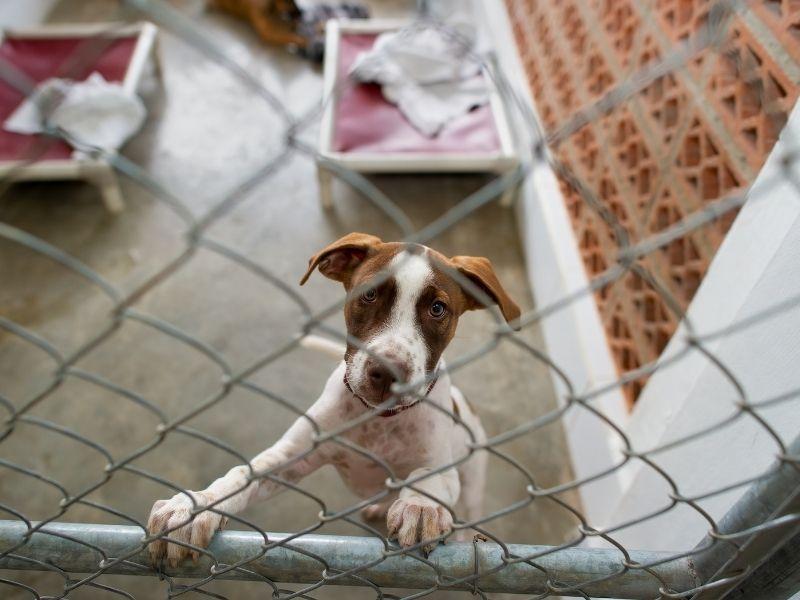Rescue dogs can be a wonderful addition to any family, but unfortunately, many people are hesitant to adopt them due to the perceived difficulties involved. A rescue dog is one that has been abandoned or surrendered by its previous owners, and will often require special care and training in order to adapt to a new home. Despite these challenges, there are many benefits to adopting a rescue dog, such as getting a loyal companion and helping reduce the number of animals in shelters. Some people might be put off by the thought of dealing with a rescue dog’s behavioral issues, but with patience and understanding, these dogs can learn to trust and love their new family.
Shelter staff are knowledgeable about the dogs they have and are experienced in judging whether a particular dog will fit well with a new potential family. For example, they may be reluctant to place a large dog that needs a great deal of exercise with a single professional person, who has never owned a dog, and who works away all day and lives in a small apartment. It makes more commonsense to place such a dog with a family where the dog always has some companionship and someone there to exercise it, and perhaps a large yard to play in. This is in the best interests of the dog, as well as the potential new family.
Therefore, the shelter staff will vet the potential adopters to hopefully match them up with a dog that will be suitable for them, and every member of their family, as well as being a positive move forward for the dog. Placing a dog with a family that cannot cope with it means that the dog may be returned and the whole process has to start all over again. This will not be a good experience for the dog.

How Long Does It Take an Adopted Dog to Feel at Home?
The period of adjustment for a rescue dog can vary, depending on several factors:
i) Age
The age of the dog is one of the biggest factors in how quickly it will adjust to a new home. A puppy, for instance, will have an easier time adapting than an adult dog, since it hasn’t had as much time to form attachments to its previous owner. Older dogs may take longer to warm up to their new family, but with a little extra patience, they can often become just as loving and loyal.
ii) Breed
Different breeds of dogs will have different temperaments, which may make them more or less difficult to train. Dogs that were bred as working animals, such as sheepdogs or guard dogs, are often a bit more independent-minded than other breeds, so it may take a little longer to win their trust and affection.
iii) Previous Experiences
If the dog has had some negative experiences, such as abuse or neglect, this may slow down the process of adjustment. It’s important to be patient and understanding with rescue dogs since they can often have lingering fears and insecurities that will take time to overcome.
iv) Health
Another factor that can affect a rescue dog’s ability to adjust is its health. Dogs that are sick or injured may have a harder time adapting to a new environment and may require special care and attention. Some health conditions, such as separation anxiety, can also make it more difficult for a dog to bond with its new family.
v) Training
Finally, the amount of training that a rescue dog has received can also play a role in how quickly it adjusts to its new home. Dogs that have had some obedience training or socialization will often be easier to handle than those who haven’t had any formal training at all.

Is It Harder to Train a Rescue Dog?
There is no easy answer to this question, as the training process for rescue dogs can vary significantly depending on a number of factors. Some dogs may come from homes where they received little or no training, which can make it more difficult to establish consistent rules and routines. On the other hand, some rescue dogs may have had prior training or socialization, which can make the process of training them a bit easier. Here are a few tips on how to train a rescue dog:
1) Start with the basics
Dogs need to learn basic obedience commands such as sit, stay, come, and down. These commands will help you establish yourself as the leader of the pack, and can make it easier to train your dog on more advanced behaviors.
2) Be consistent
It’s important to be consistent with your training, both in terms of the rules you set and the rewards that you give. Always be sure to use positive reinforcement when your dog does something right, and make sure all family members are on the same page with training instructions.
3) Use patience and understanding
Rescue dogs can often have lingering fears or emotional baggage from their previous homes. It’s important to be patient and understanding with your rescue dog and to go at its own pace. With a little time and effort, most rescue dogs can learn to trust and love their new family.
4) Seek professional help
If you’re having difficulty training your rescue dog, it may be helpful to seek professional help from a dog trainer or behavior specialist. These experts can offer guidance and advice on how to get your dog on the right track and help you establish a strong bond with your new pet.
See Also: At What Age Should I Buy a Puppy?
And: What is the Best Puppy for Young Children?
Can a Rescue Dog Be Dangerous with Children?
There is no definitive answer to this question, as the potential risk of a rescue dog being dangerous to children will depend on a number of factors. Some dogs may have had negative experiences in their past that could make them more prone to aggressive behavior towards children, such as abuse or neglect. Additionally, some breeds are known for having strong instincts that could make them more likely to attack small children, such as herding or hunting dogs. However, the vast majority of rescue dogs are not aggressive and pose no danger to children. With proper socialization and training, most rescue dogs can learn to coexist peacefully with kids of all ages.
How Can You Tell If Your Rescue Dog is Happy?
There are a number of signs that you can look for to determine if your rescue dog is happy. Some of the most common indicators include a relaxed body posture, frequent tail wagging and other forms of physical contact, and an overall positive or energetic demeanor. Additionally, you may notice signs of happiness such as playfulness, eagerness to be petted or praised, and an increased appetite. If you notice any of these signs, it’s likely that your rescue dog is happy and adjusting well to its new home.
Rescue dogs can be a great addition to any family, but it’s important to understand that they may require a bit more training and patience than other dogs. With a little time and effort, most rescue dogs can learn to trust and love their new family. Additionally, there are several things you can look for to determine if your rescue dog is happy and adjusting well to its new home.
Featured image: Every Dog Needs a Loving Home

